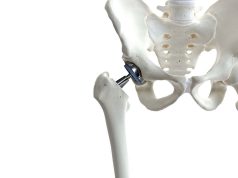The 127th American Academy of Otolaryngology-Head and Neck Surgery Foundation Annual Meeting and OTO Experience
By Beth Gilbert HealthDay Reporter
The annual meeting of the American Academy of Otolaryngology-Head and Neck Surgery was held in Nashville, Tennessee, from Sept. 30 to Oct. 4 and attracted approximately 5,000 participants from around the world, including otolaryngologists, medical experts, allied health professionals, and administrators. The conference highlighted the latest advances in the diagnosis and treatment of disorders of the ears, nose, throat, and related structures of the head and neck.
In one study, Hector Perez, M.D., of Loma Linda University in California, and colleagues found that patients can achieve appropriate postoperative pain control with reduced narcotic intake.
The authors aimed to gain insight into how patients perceive different postoperative pain regimens with differing roles for narcotics. Patients were randomly assigned to one of three groups who were undergoing typical outpatient otolaryngology surgeries. The three groups included narcotics as a first-line pain medication versus narcotics as second-line medication versus narcotic sparing. The researchers observed equal satisfaction, willingness to repeat the same regimen, and appropriate pain control across all three groups.
“We hope that this information will provide the otolaryngologist, and hopefully surgeons from other specialties, with another tool and reference point to reduce narcotic prescription and greater enable preoperative counseling on pain control regimens,” Perez said. “In addition, we can provide patients reassurance on adequate pain control regardless of the role of narcotics, at least in our examined surgeries.”
In another study, Sohit P. Kanotra, M.D., of the University of California at Los Angeles, and colleagues found that morbid obesity and low albumin levels are predictors of the need for respiratory support and invasive ventilation in pediatric COVID-19 inpatients.
The authors analyzed a cohort of COVID-19 pediatric patients admitted to a tertiary care pediatric hospital in an effort to identify factors that could predict which children might require more advanced respiratory support, including invasive measures. Among a retrospective cohort study of 192 pediatric patients (younger than 19 years of age) with confirmed severe acute respiratory syndrome coronavirus 2 infection, the researchers found that 49 patients required respiratory support, including patients with severe obesity, who were more likely to need invasive ventilation. In addition, lower levels of albumin were observed in patients requiring respiratory support.
“This study provides valuable insights for health care providers in managing pediatric COVID-19 cases. It suggests that clinicians should pay close attention to patients with severe obesity and lower albumin levels, as they may be at higher risk of requiring more aggressive airway management,” Kanotra said. “This information could help in risk assessment and early intervention for pediatric patients with COVID-19.”
In a retrospective study, Michele Carr, D.D.S., M.D., Ph.D., of the Jacobs School of Medicine and Biomedical Sciences at the University of Buffalo in New York, and colleagues found that ibuprofen use following tonsillectomy has increased since the U.S. Food and Drug Administration issued a boxed warning against codeine; however, ibuprofen use may be associated with an increase in posttonsillectomy bleeding.
Using 2008 to 2022 information extracted from an electronic health record database and specific current procedural terminology codes, the authors identified patients (up to 18 years of age) who underwent tonsillectomy and those who experienced postoperative bleeding. In addition, pain medication was assessed, which included codeine, ibuprofen, acetaminophen, oxycodone, ketorolac, and hydrocodone. The researchers found that the use of codeine fell, while use of ibuprofen, acetaminophen, ketorolac, and oxycodone increased during the study period. There was no change seen in hydrocodone use. In addition, the researchers found a simultaneous increase in posttonsillectomy bleeding.
“In 2013, the FDA issued a boxed warning against using codeine after pediatric tonsillectomy despite its frequency of use in the United States,” the authors write. “Analgesics used posttonsillectomy have changed since the FDA boxed warning against codeine. There has been a concomitant increase in posttonsillectomy bleeding, which may be related.”
Copyright © 2023 HealthDay. All rights reserved.








